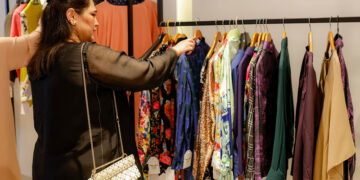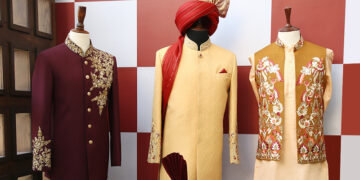 SAO PAULO: Brazil Monday kicked off its Sao Paulo Fashion Week — the most important catwalk parades in South America — amid concerns voiced by some designers that garment quality was lagging behind their world-class ambitions.Cheaper and better-made Chinese textiles, below-par training for fashion students, insufficient numbers of skilled employees, high taxes and a competitive deluge of wannabe designers were all weighing down the sector, they said.On its sultry surface, however, the event — known as SPFW — is still parading forth with all the confidence Brazil exudes as the most glamorous and prosperous of emerging economies.Several international top models are taking part, though unusually this time Brazil’s most famous export, Gisele Bundchen, the world’s highest-paid model, was not.Instead, lenses are to be focused on a male celebrity on the catwalk: Ashton Kutcher, the 33-year-old American former-model-turned-actor who will play clothes-horse Wednesday before taking up the starring role in the US sit-com “Two and a Half Men”, replacing the erratic but memorable Charlie Sheen.Kutcher, and of course Brazil’s leggy beauties in swimwear, guarantee an international media splash for SPFW.But as the event clocks up its 15th year in existence, there is a feeling that it continues to trail too far behind the better-known shows of Paris, Milan, London and New York — and that Brazil is not being taken seriously as a global fashion player.”Textile engineering has to progress in Brazil. To be more competitive, we need better material and technology in this country,” one of the designers taking part, Reinaldo Lourenco, told the Folha de Sao Paulo daily.
SAO PAULO: Brazil Monday kicked off its Sao Paulo Fashion Week — the most important catwalk parades in South America — amid concerns voiced by some designers that garment quality was lagging behind their world-class ambitions.Cheaper and better-made Chinese textiles, below-par training for fashion students, insufficient numbers of skilled employees, high taxes and a competitive deluge of wannabe designers were all weighing down the sector, they said.On its sultry surface, however, the event — known as SPFW — is still parading forth with all the confidence Brazil exudes as the most glamorous and prosperous of emerging economies.Several international top models are taking part, though unusually this time Brazil’s most famous export, Gisele Bundchen, the world’s highest-paid model, was not.Instead, lenses are to be focused on a male celebrity on the catwalk: Ashton Kutcher, the 33-year-old American former-model-turned-actor who will play clothes-horse Wednesday before taking up the starring role in the US sit-com “Two and a Half Men”, replacing the erratic but memorable Charlie Sheen.Kutcher, and of course Brazil’s leggy beauties in swimwear, guarantee an international media splash for SPFW.But as the event clocks up its 15th year in existence, there is a feeling that it continues to trail too far behind the better-known shows of Paris, Milan, London and New York — and that Brazil is not being taken seriously as a global fashion player.”Textile engineering has to progress in Brazil. To be more competitive, we need better material and technology in this country,” one of the designers taking part, Reinaldo Lourenco, told the Folha de Sao Paulo daily.
Lorenzo Merlino, a stylist who has ceased participating in SPFW, said: “We’re not even close to China, which is selling products with sophisticated fabrics at laughable prices. We’re not going to have factories like that any time soon.”Alexandre Herchcovitch, whose latest women’s collection is to be shown Tuesday, bemoaned to the newspaper that “everybody wants to be a stylist, and there’s not enough room for so many people.”He also stressed a common refrain that “we have poor qualifications in sewing and design.”The Brazilian designers were responding to questions about the biggest challenges facing their national industry, in reaction to this edition of SPFW adopting the theme “Futures.”For all the criticism, though, the organizers of SPFW retained great optimism about fashion in Brazil — if only because there seems to be a limitless appetite for luxury as Latin America’s biggest economy gains in sophistication and wealth.
Certainly, many well-heeled consumers are turning to elite European and US labels which they now find affordable, even with 100-percent taxes slapped on them to protect home-grown brands.But Brazil’s burgeoning middle-class is helping Brazilian many fashion houses enjoy the consumer boom in the country.”Twenty or thirty years ago when we talked about fashion, it was without a doubt craziness to think we would be here today,” said the main organizer of SPFW, Paulo Borges. “We always knew it would take a long time.”His event has now been around almost as long as the period it took Brazil to climb to the level it is now: an investment-grade darling of investors everywhere.That has spurred optimism, and even a general consolidation of the fashion sector as corporate investors see potential.However some clouds are forming on Brazil’s economic horizon which could yet unleash a cold shower on the catwalk.Growth, which last year topped 7.5 percent, is expected to slow to 4.0 percent or less this year, while inflation is soaring to a worrying 6.55 percent. Retail sales in April fell for the time in a year as consumers cut back.If those trends continue, the Brazilian fashion industry could be among the first to take a tumble. – Yahoonews












